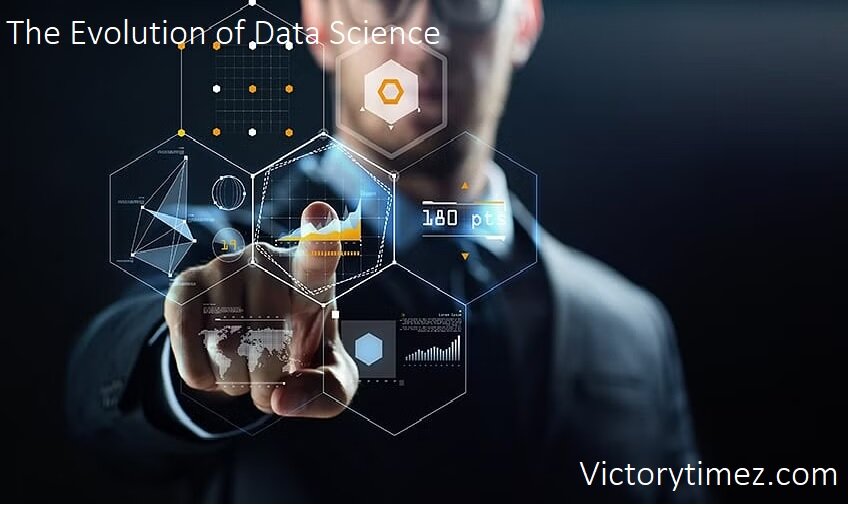
Introduction
In the past decade, data science has emerged as a transformative field, reshaping industries, enhancing decision-making, and driving innovation. This article explores the journey of data science from its fundamental concepts to its advanced applications, highlighting key developments and the future potential of this dynamic field.
1. Foundations of Data Science
Data science, at its core, is an interdisciplinary field that combines statistics, computer science, and domain expertise to extract meaningful insights from data. It involves several key components:
- Data Collection: The process begins with gathering data from various sources, such as databases, web scraping, sensors, and surveys. Quality and relevance of data are critical to ensuring accurate analysis.
- Data Cleaning: Raw data often contains inconsistencies, missing values, and errors. Data cleaning involves preprocessing to correct these issues, ensuring that the data is suitable for analysis.
- Exploratory Data Analysis (EDA): EDA is the preliminary step where data scientists use statistical tools and visualization techniques to understand the data’s structure, patterns, and relationships.
- Statistical Analysis: This involves applying statistical methods to test hypotheses and derive insights. Techniques such as regression analysis, hypothesis testing, and probability distributions are commonly used.
2. The Rise of Machine Learning

As data science evolved, machine learning (ML) became a central component. Machine learning involves developing algorithms that can learn from and make predictions or decisions based on data. Key areas include:
- Supervised Learning: This type of ML uses labeled data to train algorithms. Common applications include classification (e.g., spam detection) and regression (e.g., predicting house prices).
- Unsupervised Learning: Involves finding hidden patterns or intrinsic structures in unlabeled data. Techniques such as clustering (e.g., customer segmentation) and dimensionality reduction (e.g., Principal Component Analysis) are prevalent.
- Reinforcement Learning: This area focuses on training algorithms to make a sequence of decisions by rewarding desired outcomes and penalizing undesirable ones. It is widely used in robotics and game playing.
3. Advanced Techniques and Tools
With the rapid advancements in technology, data science has seen the development of sophisticated tools and techniques:
- Deep Learning: A subset of ML, deep learning uses neural networks with many layers to model complex patterns in large datasets. Applications include image recognition, natural language processing, and autonomous driving.
- Big Data Technologies: Tools like Apache Hadoop and Spark have revolutionized the handling and processing of large volumes of data, enabling scalable data analysis and real-time processing.
- Cloud Computing: Platforms such as AWS, Google Cloud, and Microsoft Azure provide scalable computing resources and storage, making it easier for data scientists to manage and analyze large datasets.
4. Applications Across Industries
Data science has far-reaching applications across various sectors:
- Healthcare: Predictive analytics help in diagnosing diseases, personalizing treatments, and managing patient care. For instance, data-driven models can predict outbreaks or identify high-risk patients.
- Finance: In the financial industry, data science is used for fraud detection, algorithmic trading, and credit scoring. Machine learning models can analyze transaction patterns to detect anomalies.
- Retail: Retailers use data science for inventory management, personalized marketing, and sales forecasting. Techniques like recommendation systems enhance customer experience by suggesting products based on past behavior.
- Transportation: Data science optimizes routes, predicts maintenance needs, and enhances safety. Ride-sharing companies, for example, use algorithms to match drivers with passengers efficiently.
5. The Future of Data Science
Looking ahead, several trends and advancements are likely to shape the future of data science:
- Ethical Considerations: As data science increasingly impacts daily life, ethical issues such as data privacy, bias, and transparency will be crucial. Developing frameworks for responsible data use will become a priority.
- Integration with AI: The convergence of data science with artificial intelligence (AI) will lead to more advanced predictive models and automation. AI-powered tools will enhance the capabilities of data scientists and expand the scope of analysis.
- Quantum Computing: Quantum computing holds the potential to revolutionize data processing capabilities, enabling the handling of complex problems and vast datasets at unprecedented speeds.
Conclusion
Data science has rapidly evolved from its foundational principles to encompass a wide range of advanced techniques and applications. As technology continues to advance, the field will undoubtedly expand its influence, driving innovation and providing deeper insights across various industries. Understanding the journey of data science helps in appreciating its transformative potential and preparing for future advancements.